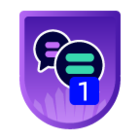The Centreon Plugins team recently introduced a new fashion of scraping monitoring indicators. It’s called Collection.
These modes could be seen as 'dumb' boiler-plates, allowing you to monitor 'things' over various protocols or APIs while abstracting some of their complexity. Collection modes rely on a JSON configuration file describing the data you want to get and the processing or mapping you may wish to apply.
This kind of mode is handy if you are in one of the following situations:
- You can't find an existing plugin to monitor what you want or fulfill your particular need.
- You need to gather data from a in-house, black box, or third-party application and transform it to be easier to analyze.
- Writing (or asking for) a dedicated plugin appears overkill because you simply want to monitor values and apply thresholds over them.
Currently, Collection modes are available for:
In other words, you can use these on any device supporting SNMP and any SQL-Based databases (DB2, MariaDB, MSSQL, Oracle, etc.).
Give them a try and share your feedback about it in the comments! We would love to hear what protocol(s) or API(s) you would like to see supporting a collection mode.




